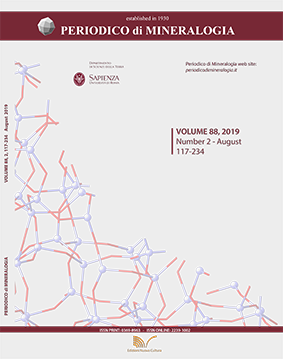Quantitative phase analysis using the Rietveld method: towards a procedure for checking the reliability and quality of the results
DOI:
https://doi.org/10.2451/2019PM870Keywords:
Rietveld, preferred orientations, quantitative phase analysis, x-ray data collection, x-ray sample preparationAbstract
The quantitative phase analysis using the Rietveld method is one of the most used analytical protocols for the characterization of several types of natural and synthetic materials, and it can be performed both on fully crystalline multiphase systems and on materials containing even an amorphous fraction. Therefore, there are several applications of this method (e.g., to natural raw materials, traditional ceramics, bricks, glass-ceramics, cementitious binders, etc.). More recently, the application of the Rietveld method has disseminated also in the chemical, pharmaceutical, and other high added-value industrial areas, where it is exploited in the operational planning, formulation analysis, and in patent protection. Nowadays, in consequence of this diffusion, several academic and private laboratories provide phase quantitative analysis using the Rietveld method as customers service, but an accreditation procedure is still pending and lacks a protocol for checking the authenticity and quality of the analytical reports.
In this letter, we focus on the principal elements that an analytical report of quantitative phase analysis, based on the Rietveld method, should contain, as well as some best-practice guidelines for sample preparation and data collection procedure.

